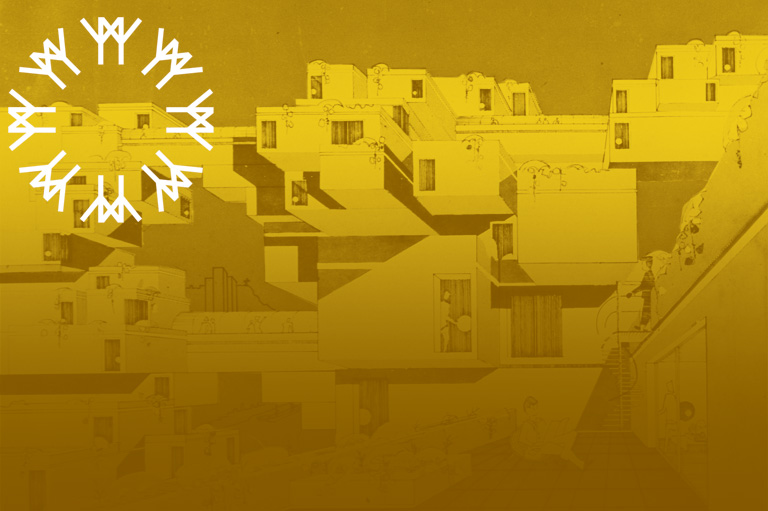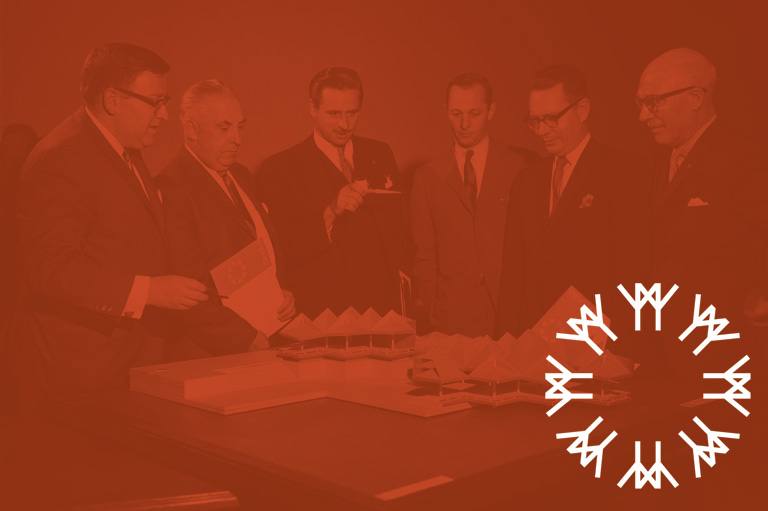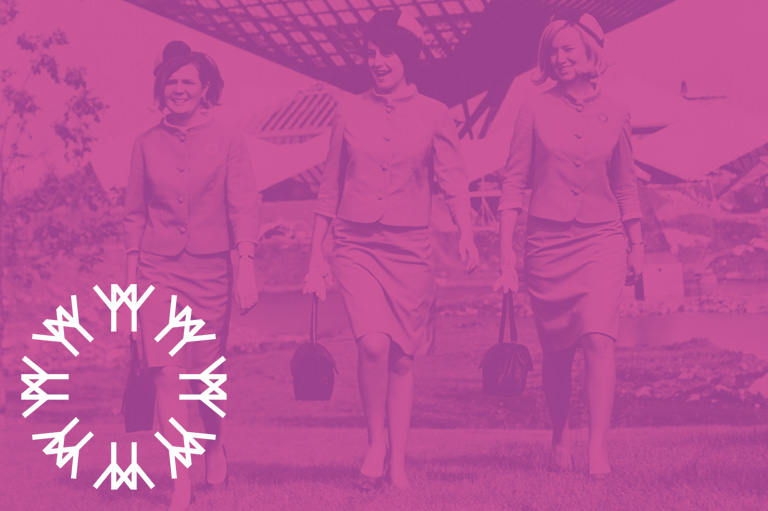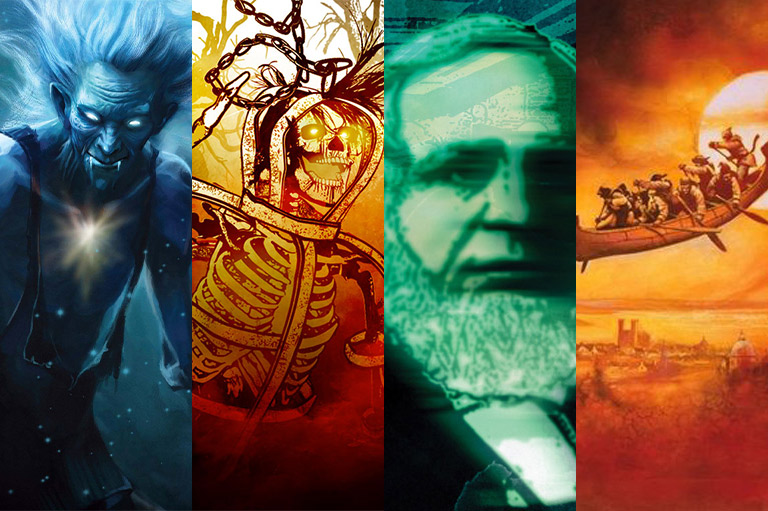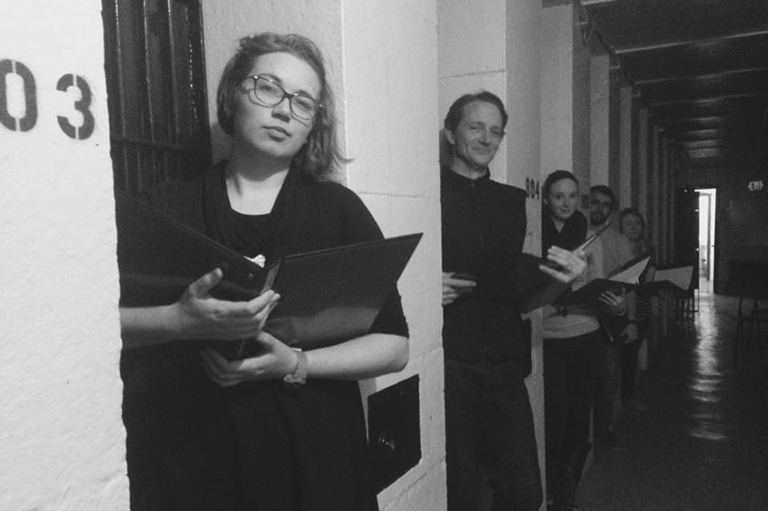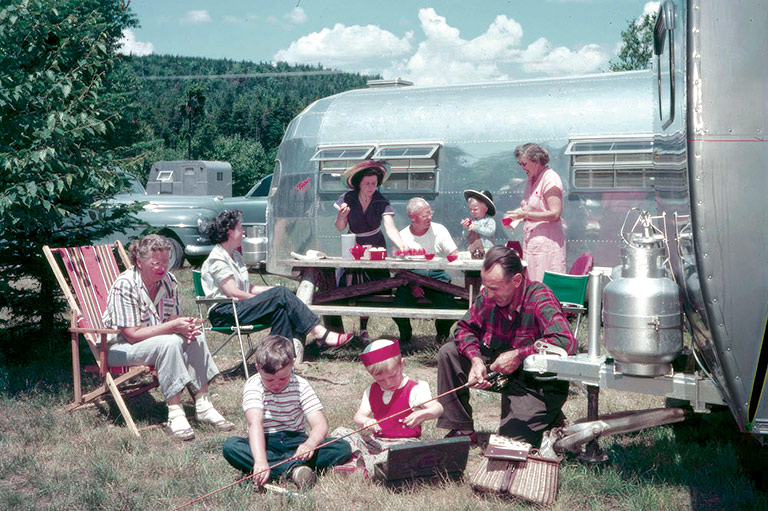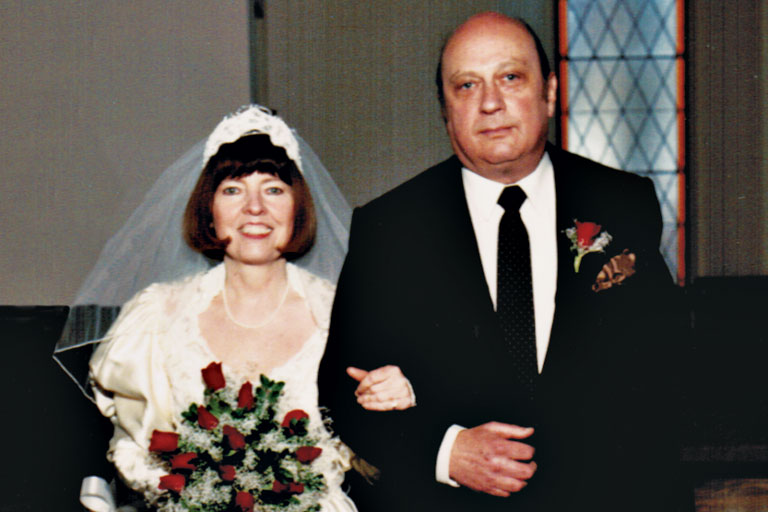An Expo 67 Kaleidoscope
If you need proof that the sixties really existed
I once heard of a girl from Hamilton, Ontario, who chose a smart little outfit that day and let herself get separated from her Catholic school class tour group as soon as they came up out of the Metro on Ile Sainte-Helene and she met Yvan or something from Out-remont and they toured the Soviet Pavilion and Man the Producer and they rode the blue minirail but the lines for Labyrinth were way too long so they went to the 360° film-in-the-round about Canada and everyone was so friendly everywhere and so sophisticated and she kissed him at Katimavik and he took her to the fireworks at La Ronde and then the nuns sent her home to Ontario and now she has daughters older than she was then but she remembers it like scenes from a Claude Lelouch movie with split screens and a pop-strings soundtrack and she thinks whatever became of that boy Yvan and where did she find that great little outfit and she thinks, yeah, baby, that was my sixties moment, Expo 67 in Montreal, Terre des Hommes.
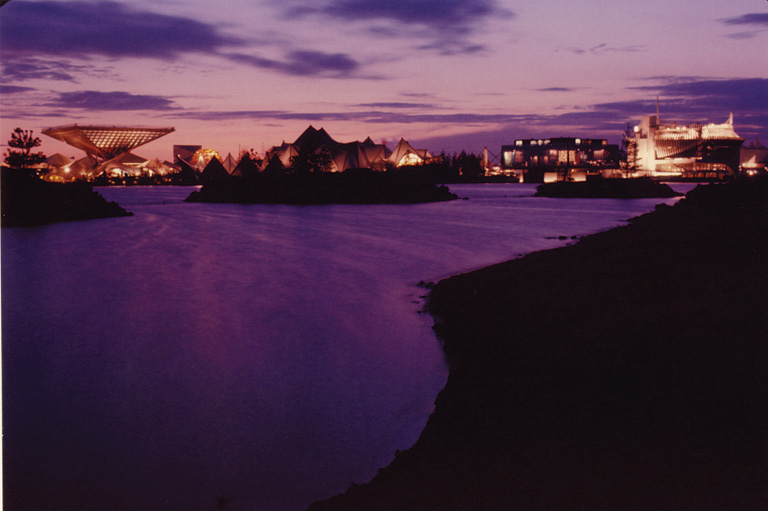
Okay, I’m not sure every detail in that story can be fact-checked. In fact, I think we need a warning here: age-sensitive material. If you are under fifty now, you were probably too young. Over seventy-five, you were pushing forty then and may have missed some of the allure. There will be historical significance in this article. But if you really cannot stand more baby-boomer gloating ’bout their g-g-generation, you had better flip to the book reviews or something, because some of that may be hard to avoid here.
From the midst of the fair, the great Montreal writer Hugh Hood declared, “It’s too much, baby; it’s something else, total environment, Romantic synaes-thesia, the way things are. ” We really did talk that way, as if to have been young and part of Expo 67 ... what was that Wordsworth line from English class? ... “was very heaven.”
It was gonna be a disaster
“I was living about a hundred yards from Pie-IX Boulevard, which seemed to be the major route for all the trucks taking the fill to the islands’ site. For about a year, that street, a main Montreal thoroughfare, was covered in dirt. Mud, on a rainy day.”
— Alan, a Montrealer, in his twenties in 1967
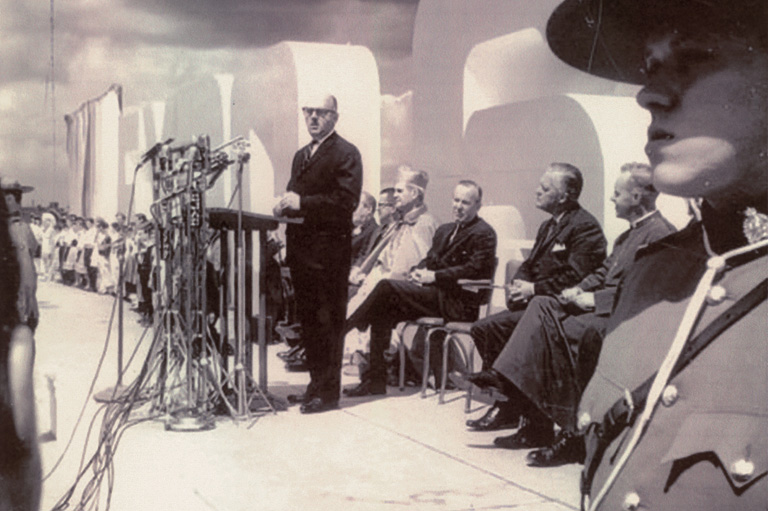
Moscow actually won the competition to hold a 1967 world exposition. Montreal only got the nod after the Soviets backed out. It was a very late start. The Diefenbaker government was not very interested. No one believed the boasts of Montreal’s mayor, Jean Drapeau. The plan to build new islands for the fair in the St. Lawrence River looked seriously crazy. Well into 1964, government officials were whispering about how to postpone a world’s fair. Canadians expected the whole thing to be a big, stupid, ugly blight upon the nation.
Then the nations of the world signed on. And the islands were not washed away. And upon them arose a spectacular skyline of pavilions and pleasure domes. And somehow the whole place seemed to plug itself into the very best of the world at that moment. From the day it opened, April 28, 1967, it was the place everyone in the world wanted to be. Canadians realized they had always known it was going to be wonderful.
Three who made the fair: Drapeau, Dupuy, Churchill
Drapeau was an amazing, electrifying little man, and word began to go out, “We’re going to have a Metro and a world’s fair” and we were hearing about how they were building new islands, which was weird. And then on the Ed Sullivan Show, Ed introduced Jean Drapeau! That’s when we said, “My God, this is really big”Montreal was so proud in 1967. It was making history. It was the centre of Canada.
— Carol, a Montrealer, eighteen that year
Jean Drapeau was mayor of Montreal most years from 1950 to 1986, and though Expo 67 was not his idea, he made it happen. His career would not end well, with that Olympic debt and the megalomania, but in the early sixties he brought Montreal its Place des Arts, and the spectacular new Metro, and a wave of urban redevelopment — and the fair.
Pierre Dupuy, Canada’s senior diplomat, became commissioner general of Expo in 1963. When they said he “sold Canada and Expo to the world,” Dupuy denied it. He said he simply made the nations of the world see it was in their interest to be part of the greatest world’s fair ever. Sixty-two countries responded to his invitation, a record number. Fifty million people came to see, half again more than were expected.
Dupuy quickly recruited a team of anglophone and francophone Canadians to build his Expo. Colonel Edward Churchill, a Canadian Forces engineer who took charge of construction, used a computer to set a “critical path” building schedule. At the time, computerized management and critical-path engineering were so advanced they seemed like magic. What really was critical was Churchill’s irresistible insistence: those deadlines had to be met.
A triumph for designers
How impressed we were with Habitat. It had terrific ideas, so novel, so many ideas. Just the way that the apartments did not have views straight up and down like a typical high-rise but were beautifully staggered and angled. It was complex and interesting everywhere you looked.
— Blanche, in her forties then, who took the train from Penticton, B.C., with her husband and three teenaged children
They had designed and developed the whole area just to walk around in. Even the trash bins were designed — to be useful but also to fit in and to be part of the overall design.
— John from Toronto, in his thirties then with small children
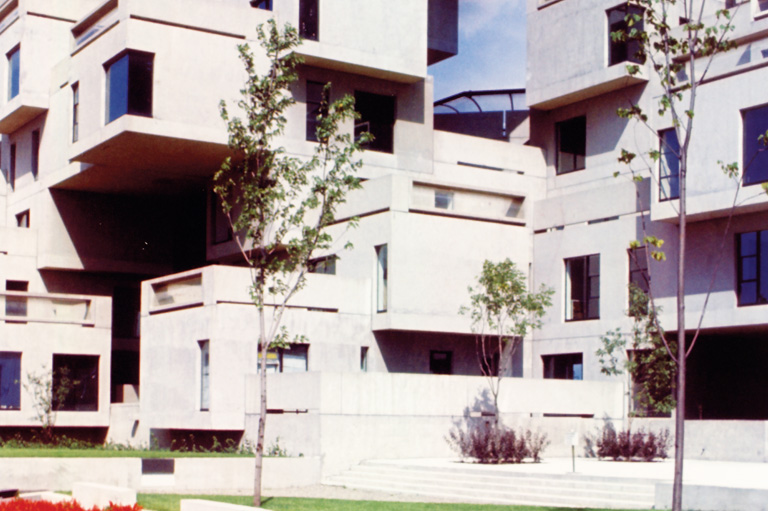
In 1968, Robert Fulford published This Was Expo, a souvenir picture book that is also an astute critical study. Fulford guessed that a key legacy of the fair might well be its architecture. The apartment complex Habitat, pre-built without being cookie-cutter, made Moshe Safdie’s reputation. Fulford loved Buckminster Fuller’s American Pavilion, a spectacular geodesic dome, then the largest ever built, and Germany’s airy tent, an innovation in space-frame construction. Fulford quoted one architect who found Expo’s buildings “the most exciting collection of buildings I’ve ever seen.”
Yet it wasn’t the buildings alone. Expo 67 was one of North America’s first encounters with a cityscape designed for pleasure, a place that mixed education and leisure and commerce, a place for friendly crowds to stroll and enjoy the view and eat well and shop and see a show. Vancouver’s Granville Island, Halifax’s Waterfront Properties, Winnipeg’s Forks, and that place down by the bend of the Bow River in Calgary, they all have a little of Expo 67 in their genes. Fulford credits a Colombian designer, Luis Villa, with the elegant design concepts that pulled it together.
Terre des Hommes, a secular celebration
We were going with our school classes and they were trying to educate us, while the kids older than us were having fun. They were visiting “other countries,” and you knew by next year they would be doing that for real, actually backpacking the world. At Expo everything was so new and so international.
— Rita, Montrealer, then age twelve
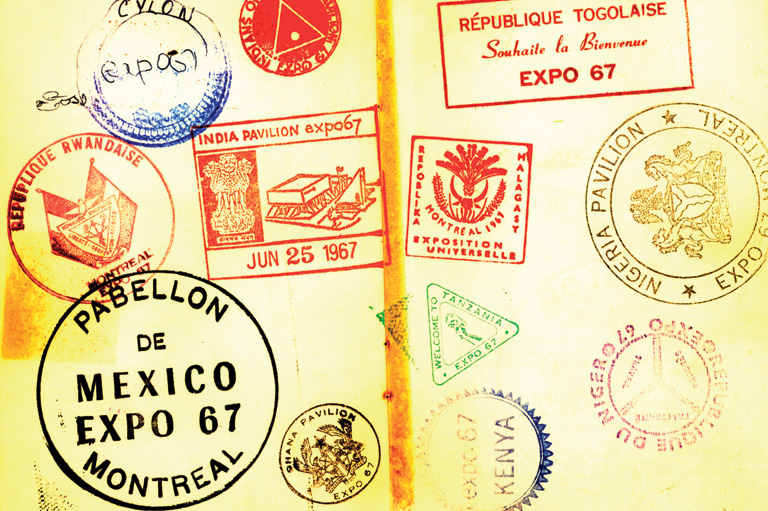
Pierre Dupuy said most world’s fairs chose a theme and then forgot about it. Terre des Hommes/Man and His World — an image inspired I by the French writer and visionary Antoine de Saint Exupéry — actually worked. Expo became one of the first flowerings of that secular humanist sense of global sharing, technological possibility, creative prowess, and sheer confidence in humanity’s power and potential. It was mostly a triumph of the west. Mao Zedong’s People’s Republic of China was not represented (Taiwan was), Africa just barely, and Latin America only a little. In Stephen Gill’s novel Immigrant, a South Asian visitor to Expo is asked for his autograph just because he is exotic. But you could not miss this breezy confidence that humankind could learn to do great things. Once the designs were perfected, man’s world was going to be wonderful.
With 7 uniquely curated newsletters to choose from, we have something for everyone.
“La découverte de la fierte”
We could see Expo 67 ahead of the ship as we came into Montreal. In the early morning, the glitter of Buckminster Fuller’s geodesic dome — it was full of hope and optimism. I was excited about Canada, about a new life. Montreal was wonderful, truly a great city. And my first sight of Canada was Expo.
— Trysh, an immigrant from Britain in her early twenties
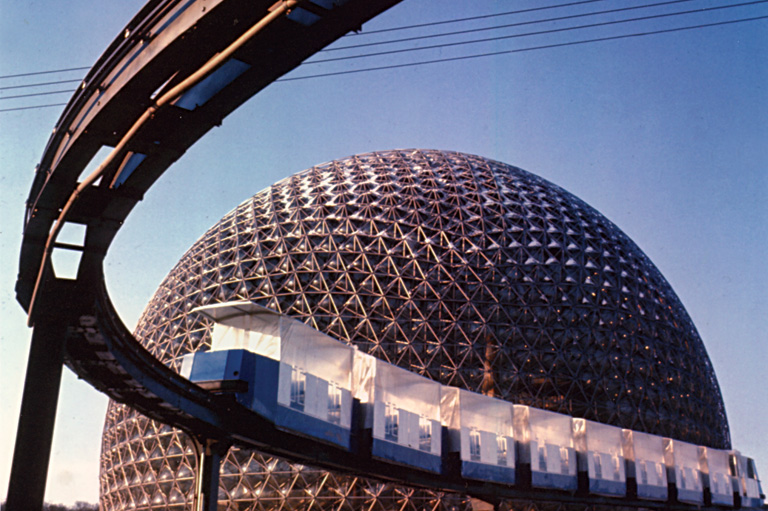
When he wrote his memoir, Pierre Dupuy called it Expo 67, ou la decouverte de la fierté. The discovery of pride. “What’s got into our good gray neighbour?” asked the Americans. The Brits said Expo had glitter and sex appeal and it was ... Canadian? Dupuy believed the surge of confidence and pride in shared achievement and international recognition would change Canada forever. On opening day, journalist Peter C. Newman wrote, “This is the greatest thing we have ever done as a nation.”
There’s a moment in almost every decade when Canada “becomes a nation,” and Expo 67 was surely one of those. In the midst of the marvelously successful Centennial celebrations, Expo 67 made many Canadians more proud and patriotic than they had ever felt before.
Canada’s own pavilion was centered on a vast inverted pyramid called Katimavik, “the meeting place” in Inuktitut. Though there was not much to do there, “there was weeping, it made us so happy,” one Canadian remembers. “Because we had no idea of what the rest of the country thought of us, and suddenly we were checking in with other Canadians who had a secret: we really have a country. You were always meeting people, we were touching people, we were saying, ‘I can’t believe this is happening.’”
Changing our relationship with the movies
Film on the wall and on the ceiling and everywhere, all the fabulous films. The Ontari-ar-ario film and all those split up images. I saw a live birth of a baby on film, and I had never seen anything like that.
— Judith, age twelve, who drove with her mother from Espanola, Ontario
I remember most the 360° in-the-round film, probably old hat now, but I really clearly remember holding on to the railing as the helicopter swooped.
— Barbara, early twenties, a British Columbian with a civil-service job in Ottawa
Patrick Watson conceived the Heritage Minutes from a memory of the one-minute film festival he attended at Expo 67. The people who developed IMAX were veterans of the National Film Board’s megascreen Expo hit Labyrinth, where you walked through the movie and the images came at you from all sides. Czechoslovakia sent the first interactive film, a movie where the audience got to vote among branching plot options.
Film suddenly burst the boundaries of singlescreens and static audiences at Expo 67, and the visual image announced it was about to go all interactive and multi-screen and omnipresent. The world did not go to Expo for the movies, but there the movies seized the world by the eyeballs, the way they have been doing ever since.
It was more than movies. Robert Fulford in 1968: “At Expo it became possible to envision a world in which all the resources previously available to private industries and to show business — film, lighting, models, carefully organized environments — would be used by professional educators” in schools, galleries, and museums. Electronic education. Edutainment. For better or worse, we have been living there ever since.
“Today Expo is part of the Québécois identity”
En 67 tout était beau/C’etait l’année d’l’amour, c’était l’année d’l’Expo
— Quebec supergroup Beau Dommage, “Blues d’la métropole,” 1975
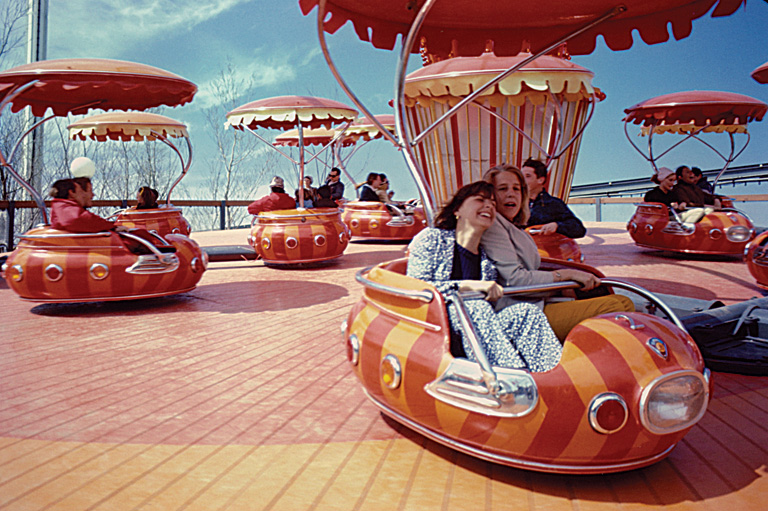
“Everyone seized on this extraordinary thing that was Expo 67 to create a flattering and celebratory idea of Quebec,” writes Laval University anthropologist Pauline Curien. Her 2003 doctoral thesis on Expo 67 examines how Expo marked a new moment in the self-image of French Quebec: when the modern world ceased to be a threat. At Expo 67, she argues, a modern francophone Québécois supplanted the folkloric French Canadian as the image the people of Quebec held of themselves. At Expo, Quebeckers simply chose to become modern.
People joked that the pavilions of Quebec and Ontario had been switched. Where Ontario’s airy tent was mostly joie de vivre, Quebec’s cool glass cube spoke of energy and technology and urban sophistication. Curien argues that Quebec’s pavilion conveyed the image of a society freed of its past and turned toward a future where faith, tradition, and the Catholic Church gave way to reason, modernity, and the state.
Expo 67 proved that those traditional French-Canadian Catholic farm families had given birth to one of the coolest peoples in the world. Quebec discovered what it was capable of. Expo’s message about global reach, secular prowess, and the glories of the modern world was young Quebec’s discovery as well.
Save as much as 52% off the cover price! 4 issues per year as low as $29.95. Available in print and digital.
The Girls of Expo
My sister worked at Expo. She wore the little hostess outfits designed by John Warden. You went to Montreal to see the women. There were minis and pantsuits, and everyone was gorgeous.
— Carol, Montreal, age eighteen
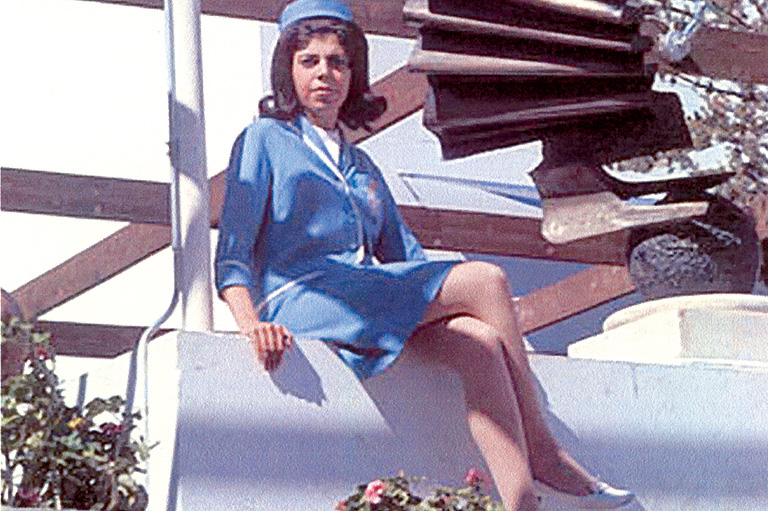
Reading the documents and guides of the moment, you would think there had never been pretty girls before, or that men had never noticed them. From forty years on, it’s amazing how much everyone writing in 1967 mentioned “the girls” of Expo as if they were part of the design, something to gaze upon in delight. Hostesses were beautiful and bilingual and they wore smart designer outfits and their hair was long and straight. In fact, that was every girl in Montreal that summer, if you believe what they were writing. It really was “Man and His World.” Today, I guess we would not even dare to call it that.
Just being there
The crowds — I loved them, that happy crowd thing, the buzz of being caught up in the event, I love a mob scene when it’s like that. It was French, it was sophisticated, and there was so much going on. The whole mood of the Expo was so fresh, now, happening. La Ronde, it was a great place to spend time.
— Elaine, twenty-one, frequent visitor from New Hampshire
I saw the Bolshoi Orchestra at Place des Arts. The wealth of material performed at Place des Arts that summer! It was just so rich. It was an amazing moment for Canadian culture, with our art and design and the best of all the world all in one place. The cultural stuff truly was extraordinary. Montreal, I fell in love with Montreal.
— Guenther, seventeen, from Cambridge, Ontario
It was a time of euphoria like no other, a sudden consciousness of where we belonged, of being Canadian.
— Gunda, a young adult newly returned to Canada from Europe
It was crowded. From the very first days until the closing in October, there were many more visitors than anyone predicted. There were crises with accommodations. There were scandals over food supply. There was panic over the long, slow lineups that wound around most popular pavilions all day and every day.
Forty years later, the only ones who remember any of that were parents who had to cope with the needs of young children. For the rest the crowds were fun, the food was good and interesting, and memories of the long waits have faded. Time and again, people then and people now agree: the real joy of Expo 67 was just being part of it.
More to explore
- Expo 67: Back to the Future, a 2005 documentary written and produced by Olenka Demianchuk for CBC’s The Canadian Experience series, is available on DVD.
- Man and His World Expo 67 Terre des Hommes
- CBC Digital Archives — Expo 67
- Expo 67 in Montreal
We hope you’ll help us continue to share fascinating stories about Canada’s past by making a donation to Canada’s History Society today.
We highlight our nation’s diverse past by telling stories that illuminate the people, places, and events that unite us as Canadians, and by making those stories accessible to everyone through our free online content.
We are a registered charity that depends on contributions from readers like you to share inspiring and informative stories with students and citizens of all ages — award-winning stories written by Canada’s top historians, authors, journalists, and history enthusiasts.
Any amount helps, or better yet, start a monthly donation today. Your support makes all the difference. Thank you!
Themes associated with this article
Advertisement


